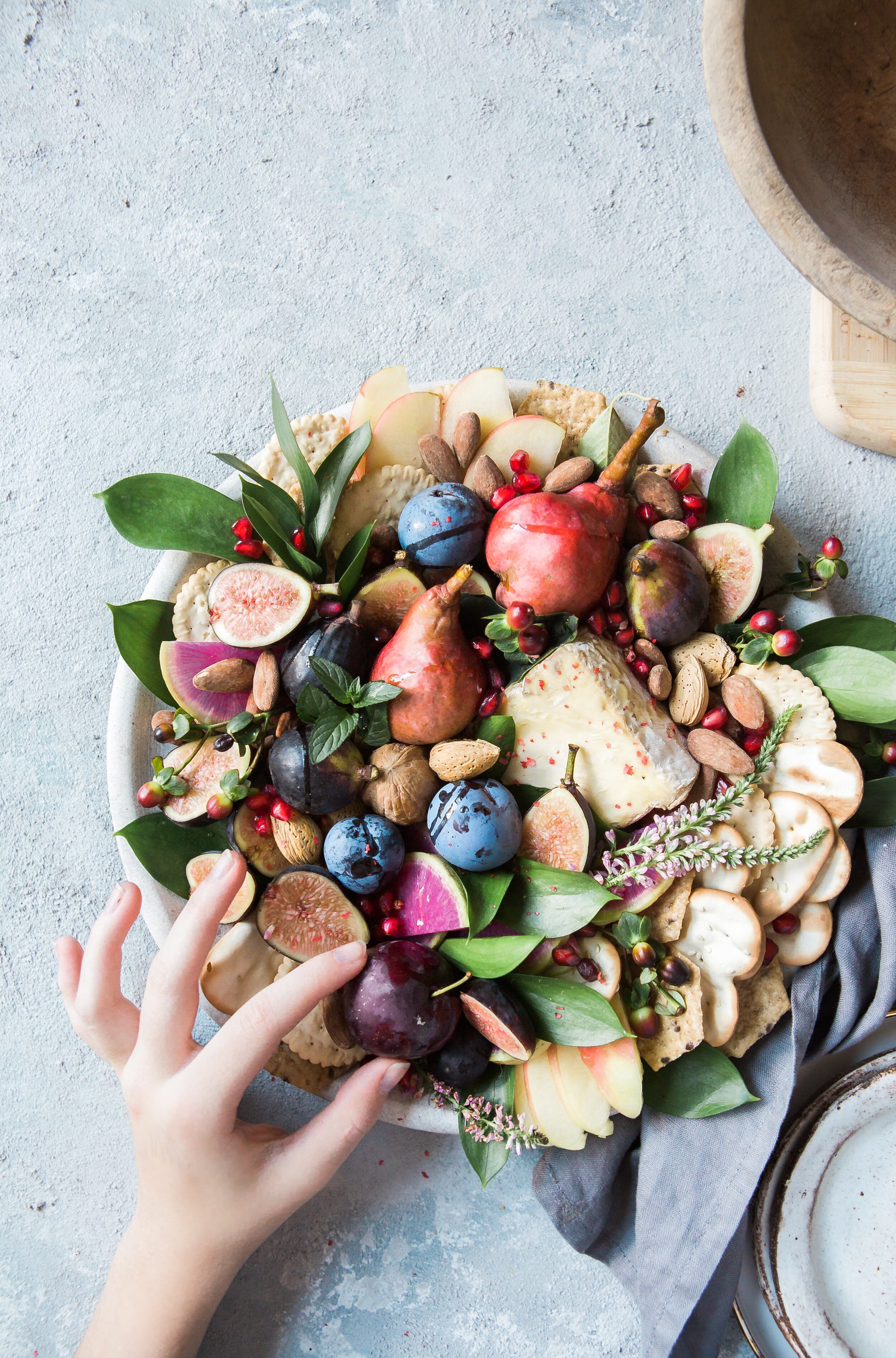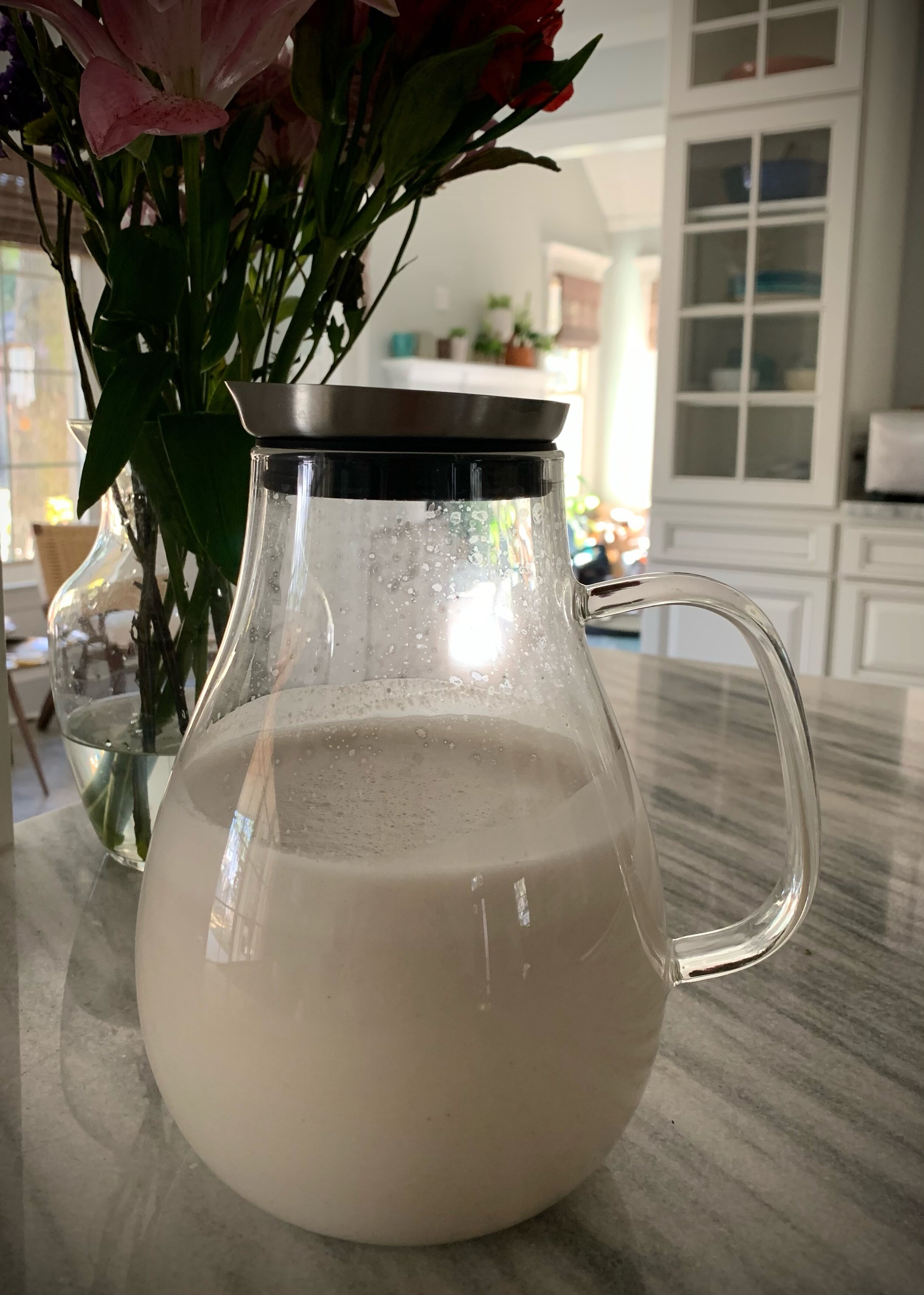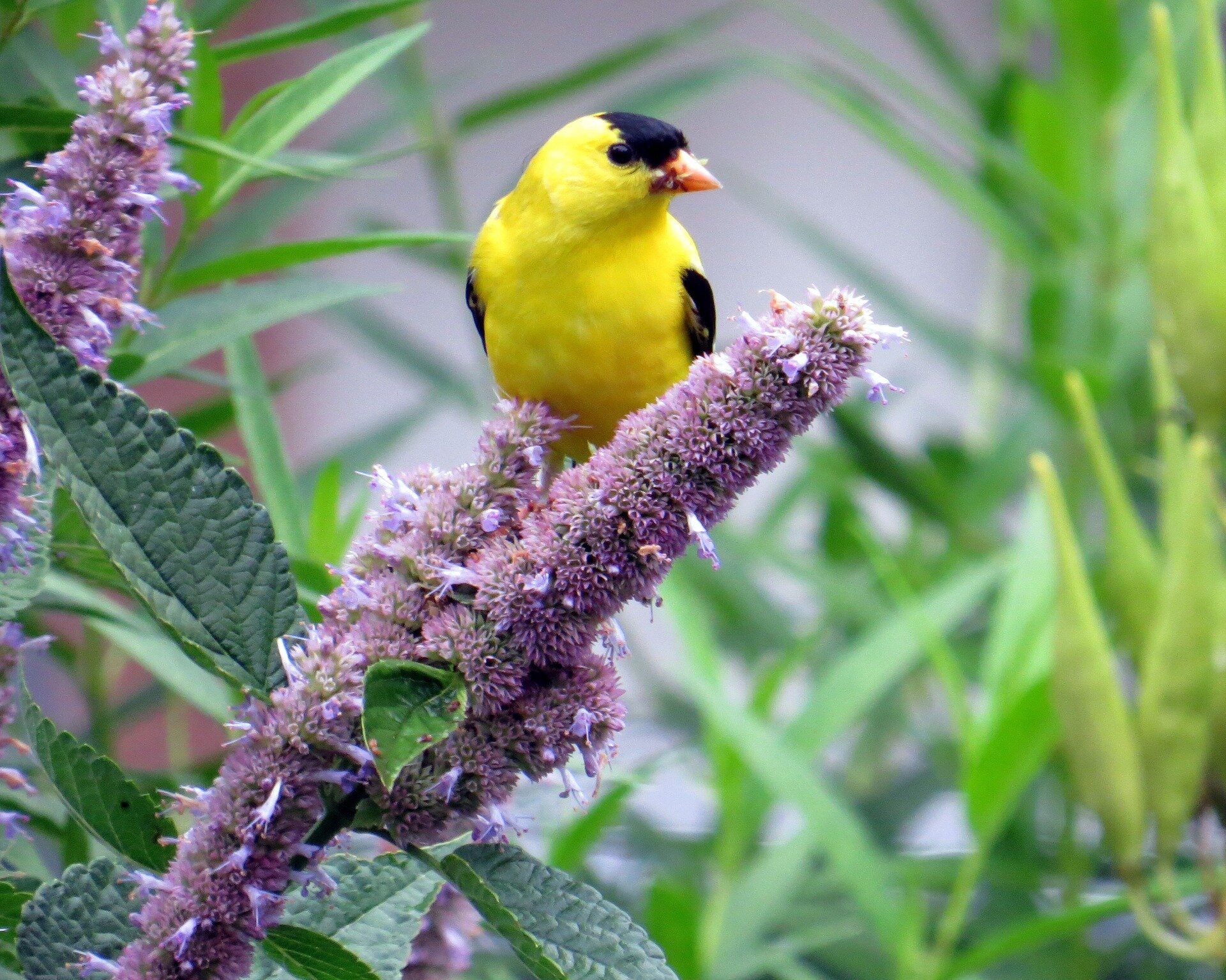Beltane brings enchanting transformations to our environment: green foliage reappears in the trees, wildflowers bloom in bright colors, thunderstorms rumble in through the skies, and days grow brighter and longer. At Beltane we finally arrive at the warm, vibrant, and fertile season of the year. This fire festival awakens feelings of hope, passion and inspiration. It is a time of abundance, vitality, passion, and fertility. Beltane comes at the opposite point in the calendar to Samhain and marks the passage into the light side of the year. And, much like Samhain, Beltane has an Otherworldly and liminal feeling of being in-between times and places as we transition into the summer season.
Beltane commences the Faerie season. When nature grows, so does the influence and presence of the Fae. It is believed that the ancient faerie race of Ireland, the Tuatha De Danann, arrived in Ireland on Beltane. There are other legends that say trooping faeries moved from their winter homes to their summer homes on Beltane Eve. Bells were carried to keep away mischievous faeries, who were thought to be extra curious about humans at this time of year. Both Beltane and the Summer Solstice (Litha) are associated with the presence of the Fae. I prefer to focus on abundance, growth, wildlife, and fertility and at Beltane; then, at Litha, I turn my focus turns to dreams, playfulness, love, fantasy, happiness, and Faery magic. My opinion is: the gate for the Fae to come through and interact with our world opens at Beltane, and by Litha they active and thriving. Even though I personally make this distinction for keeping order in blog entries and my second draft of Eight Extraordinary Days, feel free to use the summer season, or any season that resonates with you, as an optimal time for work with the Fae (if you do so with knowledge, reverence and caution).
The Origins of Beltane and Historical Festivals of May
Beltane’s origins are much like Samhain: they take us back to the time of the Celts. In Celtic regions, May 1st was considered the beginning of the summer season. This was a major fire festival celebrating the season of fertility and growth. The word “Beltaine” comes from the Celtic word meaning “Bright Fire.” The name is also said to honor of the Celtic deity Bel, a sun god, much like Apollo. Bel is a god of healing, crops, and springs. In The Provenance Press Guide to the Wiccan Year, Judy Ann Nock explains the reason why a sun god can also be connected to water: “The Celts believed that by night, the sun traveled underneath the world to heat the waters in the thermal springs, uniting the energy of the sun with the healing properties of water.”
Beltane was a time for fertility, health, and good luck rituals, many of which involved bonfires that were lit in certain regions of Scotland, Ireland, and Wales. According to Melanie Marquis in in Beltane: Springtime Rituals, Lore, and Celebration, the fires were sacred and magical: “Their flames, their smoke were all believed capable of granting health and protection.” Men and women would leap the fire for good luck in the coming year. Animals were herded through the smoking embers for purification and protection. The ashes from the Beltane bonfires would be scattered on the fields to ensure a bountiful crop. Hearth fires would be extinguished and would be relit with embers from Beltane bonfires.
Today in Scotland there is still a very popular celebration in Edinburgh called the Beltane Fire Festival. According to their website, the event is meant to reconnect participants to nature: “It is important to note that the purpose of our festival is not to recreate ancient practices but to continue in the spirit of our ancient forebears and create our own connection to the cycles of nature.” The festival is held at Calton Hill where there are performances and drumming, many in extravagant costume and makeup. Thousands attend the event each year, inviting people to experience the sacred and theatrical aspects of the ancient Beltane fire festival.
There are other historical holidays that honored the fertile and abundant energy of May. The Romans celebrated the Festival of Floralia at the end of April and the beginning of May in honor of the goddess Flora. Flora was a goddess of flowers, spring, and fertility. One myth of Flora, who was originally a nymph, tells of her having gone for walk outdoors on a spring day in her original homeland of Elysium. Zephyrus, god of the West Wind noticed how beautiful she was, chased her, and then named her his bride, making her a goddess. Flowers were the main decoration for Floralia.
Even during the Roman festival, the awakening of nature heralded in a sensual, evocative, and celebratory event. As nature was seen as untamable and wild, so were the celebrations. Melanie Marquis describes the celebrations of Floralia: “Though ultimately a serious event expressing great reverence for Flora, the festival had a strong element of fun that predominated it. Lots of wine and lots of boisterous singing and dancing created an atmosphere of raucousness, the noise of which may have been believed to help Nature fully wake up and get energized after a long winter’s slumber.”
In England, the celebration of May Day was a practice believed to have its roots in Beltane, having been celebrated in Medieval times and earlier. Puritans banned celebrations in the 16th c., but Charles II restored the holiday in the 17th c., and since then May Day traditions are still enjoyed in areas of England. We are fortunate to have these celebrations today, as they allow us to have a glimpse at what may potentially be ancient traditions that survived beyond Christianity’s conquest.
On May Day, English Villages would crown a May Queen and a May King. The May Queen was said to be an embodiment of fertility and agriculture. Her consort, the May King, was an embodiment of the spirit of vegetation. This May King is also honor in the form of the Green Man or Jack-in-the-Green. Many villages would erect (perfect wording for Beltane) a Maypole in their village. The Maypole is a tall pole that would be topped with a crown of flowers and long ribbons. Each villager would take a ribbon and participate in a weaving dance around the pole to wrap the ribbons around the pole in a braided decoration. I remember as a child dressing up in white on May Day and dancing around a Maypole at my elementary school. To this day there are still villages that have Maypoles: the English village of Barwick boasts having one of the tallest Maypoles in the England. And, you can see a May Day procession in the village of Gawthorpe, which features the May Queen and her maidens, horses, music, and costumes.
In Cornwall, a unique take on Beltane in a festival known as Obby Oss. This celebration takes place in the village of Padstow, which hosts a special May Day procession that features Oss Obbys, which are depictions of hobby horses, but especially peculiar due to the large black disc shape that surrounds the horse’s head. There two Obby Osses: the Blue Obby Oss and the Old Obby Oss. Those wearing the costumes would dance through the procession, concluding at the town’s Maypole and their return to the stables.
Walpurgisnacht, or Walpurgis Night, is a celebration that originated in Germany but is celebrated over areas of North and Central Europe. Walpurgisnacht is in honor of St. Walpurga, who was said to protect people against pests, whooping cough, and witches. Worshippers would pray to her for protection against witches and evil forces. Her date of celebration was designated on May 1st because this is when she was canonized, though the holiday and its practices are believed to pre-date Christianity, much like Beltane. Walpurgisnacht has a spooky feeling, and writer Audra Grigus suggests that it acts very much like a “second Halloween.” This is fitting with modern witches’ observances of otherworldly, liminal energy being apparent at both Beltane and Samhain. It was believed that Walpurgisnacht was a time when spirits roam freely and that witches are riding through the sky. There was a believe that witches congregated at the peak of Brocken Mountain in Germany. Church bells would ring, special herbs were hung on doors, offerings of bread and butter were made, and bonfires were built to keep evil at bay on May Eve. And today, Walpurgisnacht is celebrated with bonfires, music, festivals, and setting off fireworks.
Embracing the Season of Beltane
Beltane is lovely opportunity to reflect on how you are developing and growing things that you are passionate about. If the theme of the Spring Equinox was to plant the metaphorical seeds of the things you wish to manifest in your life, consider Beltane’s theme to be doing whatever it takes to ensure those seeds are positioned in the right environment to grow. In other words: take a moment to pause at Beltane and assess how your goals and dreams are coming along and shaping in reality. Make concrete plans, timelines, and lists to keep you on target for success. While you’re at it, sprinkle in a little spell work for abundance and growth to ensure things keep moving in the right direction. Beltane is a time to deeply know that you are worthy of happiness and success.
For most of us, Beltane is a time of warmer weather that allows for wildlife to thrive. Because of this, Beltane is an excellent time to connect with nature and animals. If you are an outdoorsy person, use this time to walk forest trails, go birding, or camp with an overnight bonfire. If you are a domestic witch, use this time to tend to your house plants, work in your garden, or look for magical wildflowers on your lawn. Take extra time to connect with your pets: perhaps this is a nice time of year to give them offerings (aka treats) as one would for the Fae. You may also consider volunteering with animals to ensure that less fortunate animals find love and safety.
Since Beltane is a gateway into the light half of the year, consider doing divination to see what lies ahead for you in the warmer season. Ask the divination to highlight the path to your higher purpose or to the path of least resistance. You may want to do house blessings and spell work to attract good luck and happiness in your life. To connect with the Fae in an amicable manner this summer season, you can leave them a sweet offering of milk, honey, cream, berries, or even sweets.
Here are some questions to contemplate or write about at Beltane:
If you could have three wishes right now, what would they be?
Have you ever had an encounter with faeries? If so, what happened?
Who is someone you’ve loved romantically? How has that shaped your life?
What opportunities are happening right now that you think will be a benefit to you?
What are you excited about doing over the summer?
What projects or activities outdoors are you eager to catch up with and make some progress on?
What activities do you participate in that are fun and playful?
Correspondences for Magic and Celebrations at Beltane
Names: Beltane, May Day
Date of Celebration: May 1st, or the sun is positioned 15 degrees relative to Taurus, or the cross point between the Spring Equinox and Summer Solstice. Some also begin celebrating Beltane on May Eve (the night of April 30th).
“Sensing Beltane” (moments when it feels like the Beltane season):
When cicada broods re-emerge
When you smell honeysuckle or jasmine blossoms
When the trees fill up with green foliage
When it is easier to go outside without a coat or sweater on
When there are thunderstorms
When your allergies start kicking up from pollen
When you wake up to birds singing outside
When seasonal farmer’s markets and farm stands are open for business
Deities Honored:
Aphrodite
Artemis
Bel
Cernunnos
Diana
Dionysus
Flora
Freya
Green Man
Maia
Pan
Venus
Beltane Animal Allies:
Badger
Bear
Bumblebees
Cicadas
Dear
Fox
Frog
Hedgehog
Robin
Sea Turtles
Snakes
Squirrel
Toad
Magical focuses:
Abundance
Animal Magic
Beauty
Divination
Faerie Magic
Fertility
Forest Magic
Growth
Healing
Love
Passion
Prosperity
Purification
Sensuality and Sexuality
Tree magic
Suggested Activities:
Collect Dew for beauty and love spells
Dance around a Maypole
Enjoy singing and dancing
Go birding
Go for a hike
Go swimming
Have a bonfire
Host an outdoor
Leave an offering of berries and cream for the Fae
Make a flower crown or flower wreaths
Perform magic to cleanse, purify, and protect your home
Practice Divination
Plant seeds and garden
Tend to houseplants
Volunteer at an animal shelter
Altar Decorations:
Chalice
Faerie Figurine
Green Leaves
Miniature Maypole
Pictures of Pets
Ribbons
Wildflowers
Yellow Flowers
Food and Beverages:
Almonds
Asparagus
Avocado
Bannock (oatmeal cakes)
Broccoli
Candied Flowers
Carrots
Cherries
Cream
Goat Cheese
Greens
Honey
Leeks
Mango
Mead
Mushrooms
Peas
Pineapple
Rhubarb
Salad
Strawberries
White Wine
Plants, Herbs, Incense:
Bluebells
Cinquefoil
Cowslip
Daisy
Fern
Foxglove
Hawthorn
Hibiscus
Honeysuckle
Ivy
Jasmine
Lily of the Valley
Mayapple
Marsh Marigold
Mint
Primrose
Rowan
Sweet Woodruff
Thyme
Tonka Bean
Vanilla
Wood Sorrell
Ylang Ylang
Crystals:
Carnelian
Chrysoprase
Emerald
Fluorite
Garnet
Malachite
Rose Quartz
Ruby
Sapphire
Colors:
Blue
Burgundy
Forest Green
Plum
Red
White
For a complete list of works referenced in this article, please click on this link.

































































